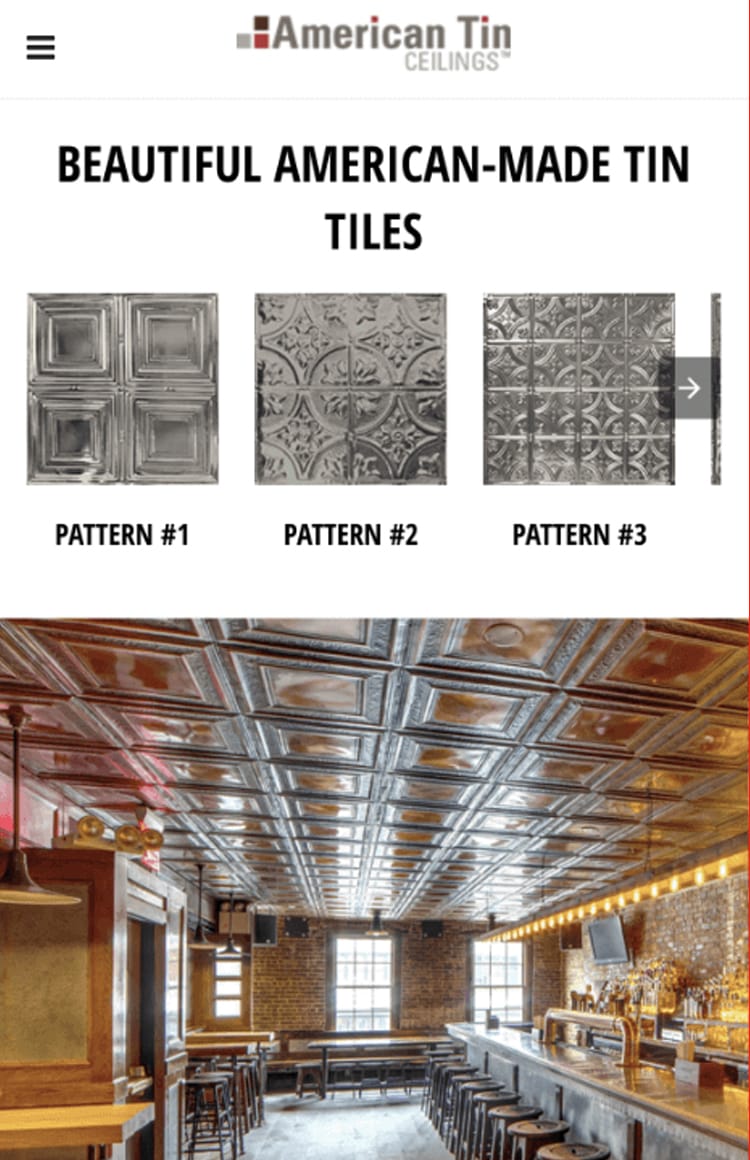JUL 11, 2018
Renovation Brands improves speed and site duration with AMP

Renovation Brands, a top 500 e-retailer, is the parent company of multiple fast-growing home improvement products brands serving both residential and commercial customers in the renovation space. With sites such as American Tin Ceilings, Renovation Brands has a distinct focus on a user-first digital experience.
Solution
At Renovation Brands, “We’re constantly thinking about how to improve a customer's experience when interacting with our sites,” says Rocky Glaze, chief marketing officer. They decided to implement AMP pages across all brands for faster load times and a user interface (UI) that would provide better product visualizations. The in-house development team concluded that if they reached parity with interactive components via AMP (including a visualizer to showcase customizable backsplash and ceiling options), they could forgo a more complex JavaScript client framework.
The team incrementally adopted AMP for their highest-trafficked pages, which took only about 30 minutes per page. “Once solutions were discovered, we implemented them on all our sites, making for quick progress across all our brands,” says Director of Web Development Aaron James. Switching completely to AMP took about eight hours per site.
Results
“AMP lets us quickly generate new, interactive content while optimizing our overall site experience,” James shares. “Building and testing AMP pages is a breeze for our design team, and the capacity of our A/B testing has nearly tripled. And introducing new interactive pages like AMP stories will help us get the most out of our content.”
For all their web traffic, Renovation Brands saw 27% longer session duration, 24% more pages per session, and a 30% lower bounce rate on their new AMP pages. Specifically for Google Shopping campaign traffic directed to AMP pages, session duration rose 124%, pages per session doubled, and the bounce rate dropped by 56%. In addition, average load times fell by nearly half, from 6.5 to 3.5 seconds, while the conversion rate rose 79%.
“Using all possible channel types was key for us, to test the increases in performance compared to the non-AMP experience,” James adds. “By deploying AMP pages to multiple platforms, we’ve been able to unify all front-end development. As a result, our development costs have been cut nearly 60%.”